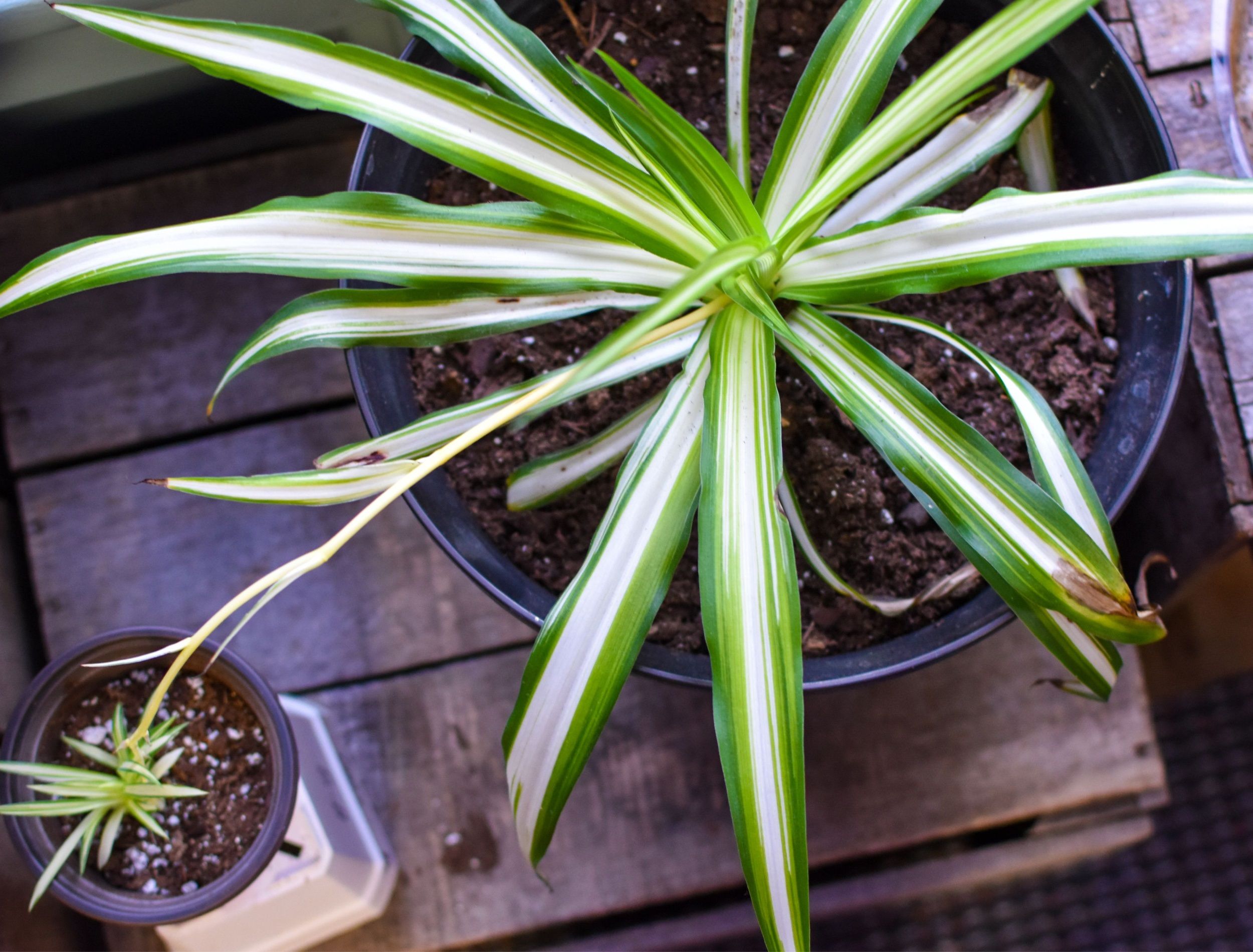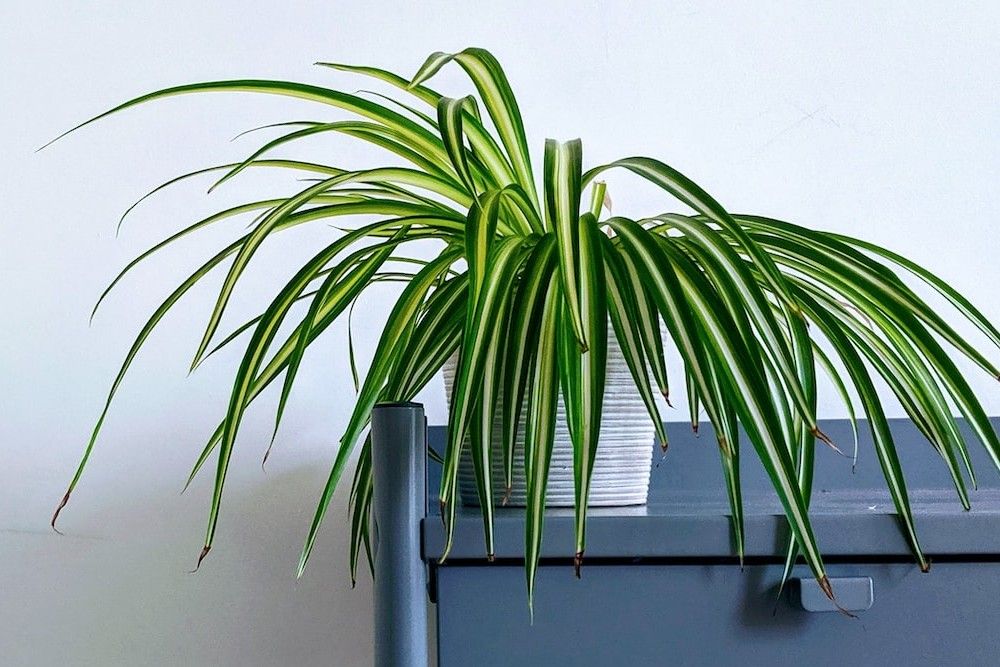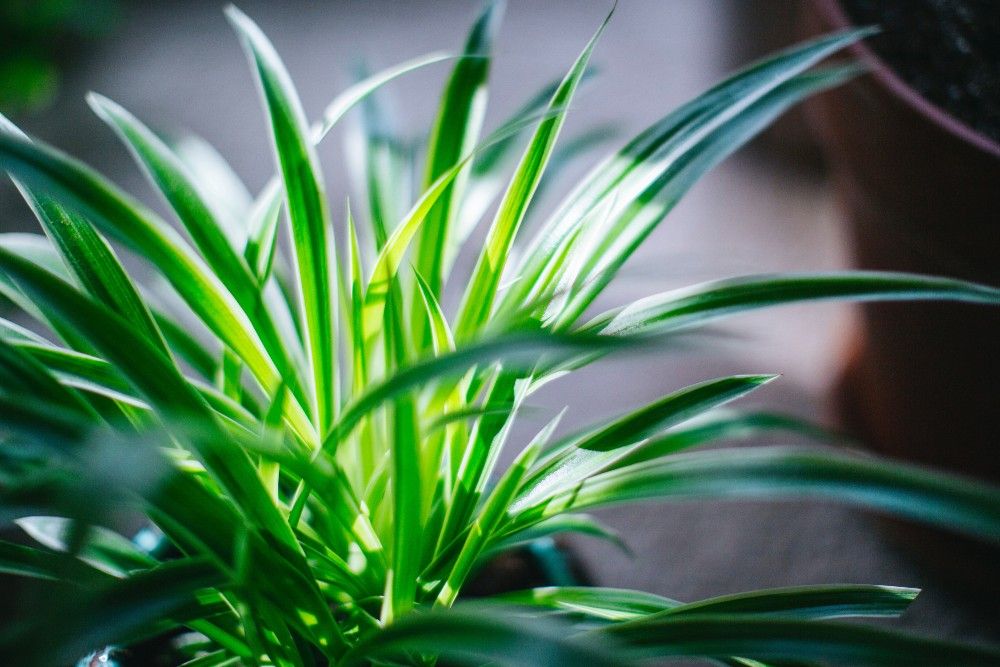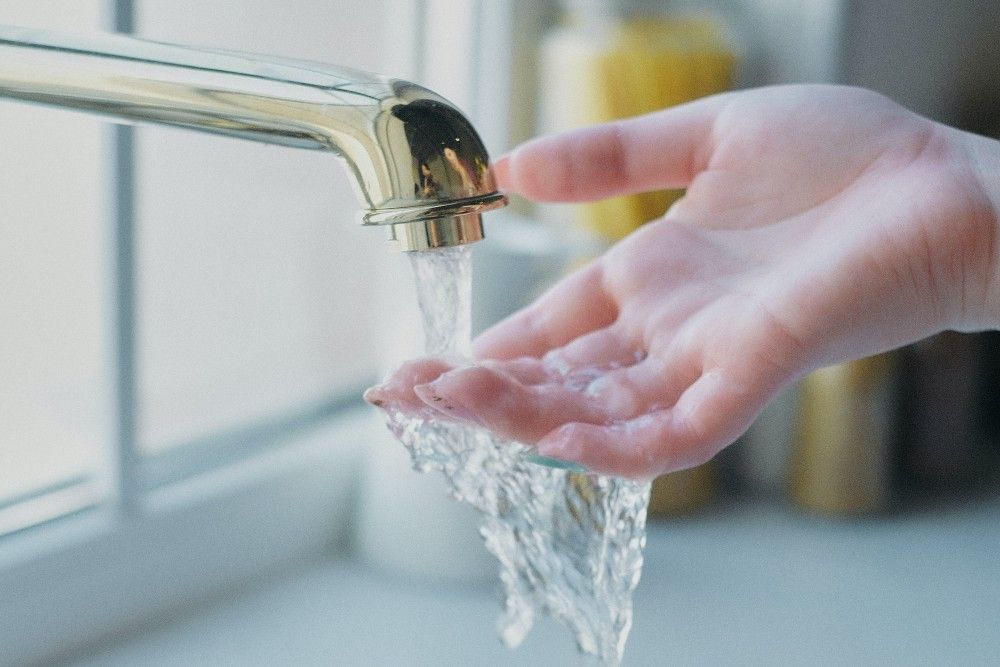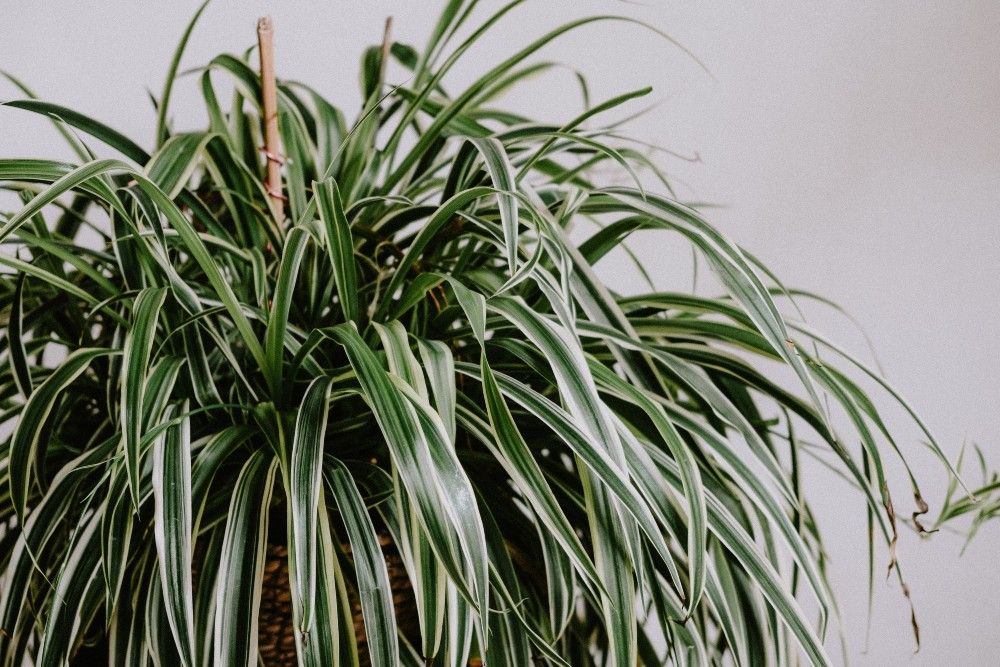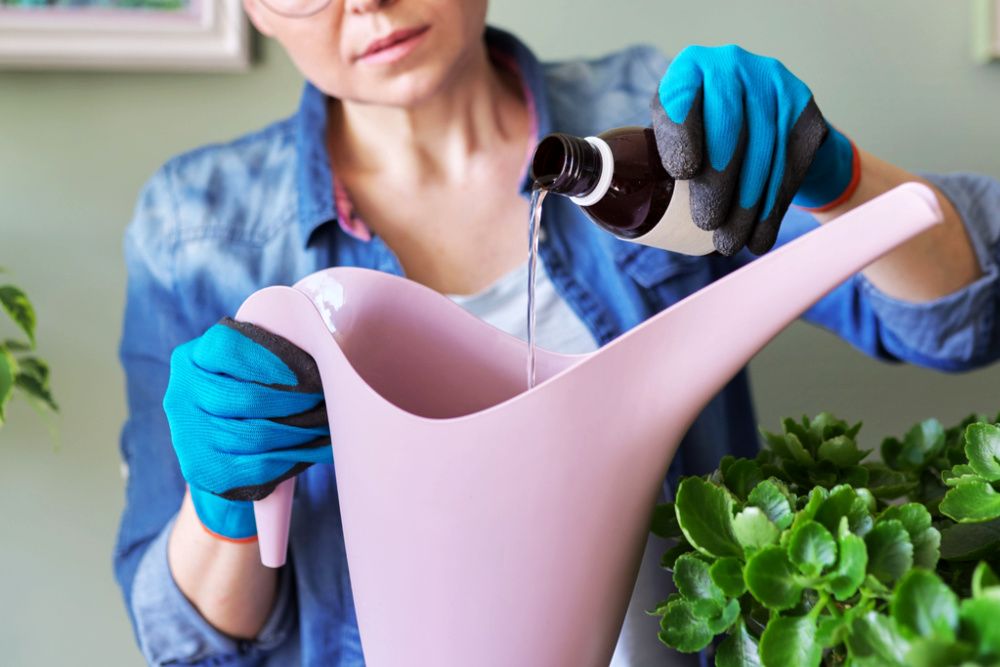Spider plants (Chlorophytum comosum) get their name from the distinctive, small spider-shaped offshoots or pups that grow along their stems, often called spider plant babies. Arachnophile or arachnophobe, you can grow these plants for their unique foliage as a houseplant or in your backyard. But what happens when your spider plant isn't growing as it should?
If you notice brown tips or leaves on your spider plant, it's crucial to figure out why it's happening and how exactly to fix it. Learn about five reasons why your spider plant tips may be turning brown.
1. Improper Watering
Image credits: Lucian Alexe via Unsplash
One of the main reasons that spider plants' leaves start to brown at the tips is because of too much or too little water. Spider plants have tuberous roots which store water and keep the plant hydrated. Because of this, they are drought-tolerant and can go for long periods without water.
Overwatering your spider plant will lead to brown leaf tips, root rot, and stunted growth. On the other hand, underwatering can lead to problems as well. Not enough water will cause the plant to dry out, with brown tips and leaves that appear lighter in color.
Spider plants like evenly moist well-draining soil. The soil should not be overly dry or wet. Water the plant with a couple inches of water once a week during its active growing season, which is spring and summer. In the fall and wintertime, water less often, once every other week.
Stop improper watering by checking on the moisture level of the plant's soil. Do this by inserting your finger into the soil to see if the first few inches are dry to the touch. For better accuracy and to test if the soil is still moist deep in the container, use a moisture meter. Always grow your spider plant in a pot with proper drainage holes to prevent water from building up in the bottom of the container.
2. Too Much Sunlight
Image credits: おにぎり via Unsplash
If the tips of your spider plant turn brown, it could be getting too much sunlight. Spider plants grow well in multiple climates; however, they do not like direct sunlight. Direct sunlight will burn the leaves, causing brown tips and spots to appear.
But don't stress, your spider plant can still make a comeback! If this happens, move the plant to a location that receives less sunlight immediately. Using clean scissors, remove any dead leaves and brown tips from the plant.
Spider plants grows best in indirect sunlight, so place it in a spot that receives filtered light, like an east or north-facing window. If your spider plant is outdoors, choose a location that gets partial shade away from the intense afternoon sun.
3. Chemicals in Tap Water
Image credits: ZUMRAD NORMATOVA via Pexels
Sometimes spider plant leaves turn brown because of harmful chemicals, such as chlorine and fluoride, that you can find in your tap water. These chemicals build up in the soil and significantly damage your plant's overall health. To avoid this, water your plant with filtered or distilled water instead of tap water.
Pro Tip: The best type of water for your spider plant is rainwater. Leave a few buckets outdoors to begin collecting rainwater for your plants.
4. Low Humidity
Image credits: Mathias Reding via Pexels
Another reason your spider plant tips may be turning brown is because of low humidity. Without proper humidity for your plant, its leaves will dry and brown.
Spider plants thrive in a humid environment like the coastal areas of their native South Africa. To mimic this environment, increase the humidity in your home. Do this by placing a humidifier near your plant indoors and maintaining a room temperature between 55 to 80 degrees Fahrenheit.
You can also lightly mist the plant every few days to increase humidity or place it on a pebble tray.
5. Overfertilizing
Image credits: VH-studio via Shutterstock
The last reason your plant may be suffering from brown tips is overfertilizing. Houseplants need regular fertilizing, but there is such thing as too much of a good thing. Overfertilizing causes a build-up of salts in the potting soil.
Fertilize your spider plant one to two times per month during the spring and summertime when it is actively growing. Use an all-purpose water-soluble fertilizer, or opt for a slow-release granular fertilizer. However, during the fall and winter, hold off on fertilizing as the plant goes into a dormant state.
If you think you've given your spider plant too much fertilizer, don't panic. Start by flushing the plant with water. Slowly pour water continuously into the container until it drains out the bottom and repeat this process a few times. Also, make sure to remove any brown tips from the plant and if necessary, remove the entire leaf to promote new growth.
Say Goodbye to Brown Tips
With these tips and care guidelines, brown tips on your spider plant are a thing of the past! Leaves that turn brown are a tell-tale sign of improper care and must be fixed immediately. Remove any damaged leaves from your plant by pruning them with scissors.
Have you experienced brown tips on your spider plant before? Leave a comment down below.

